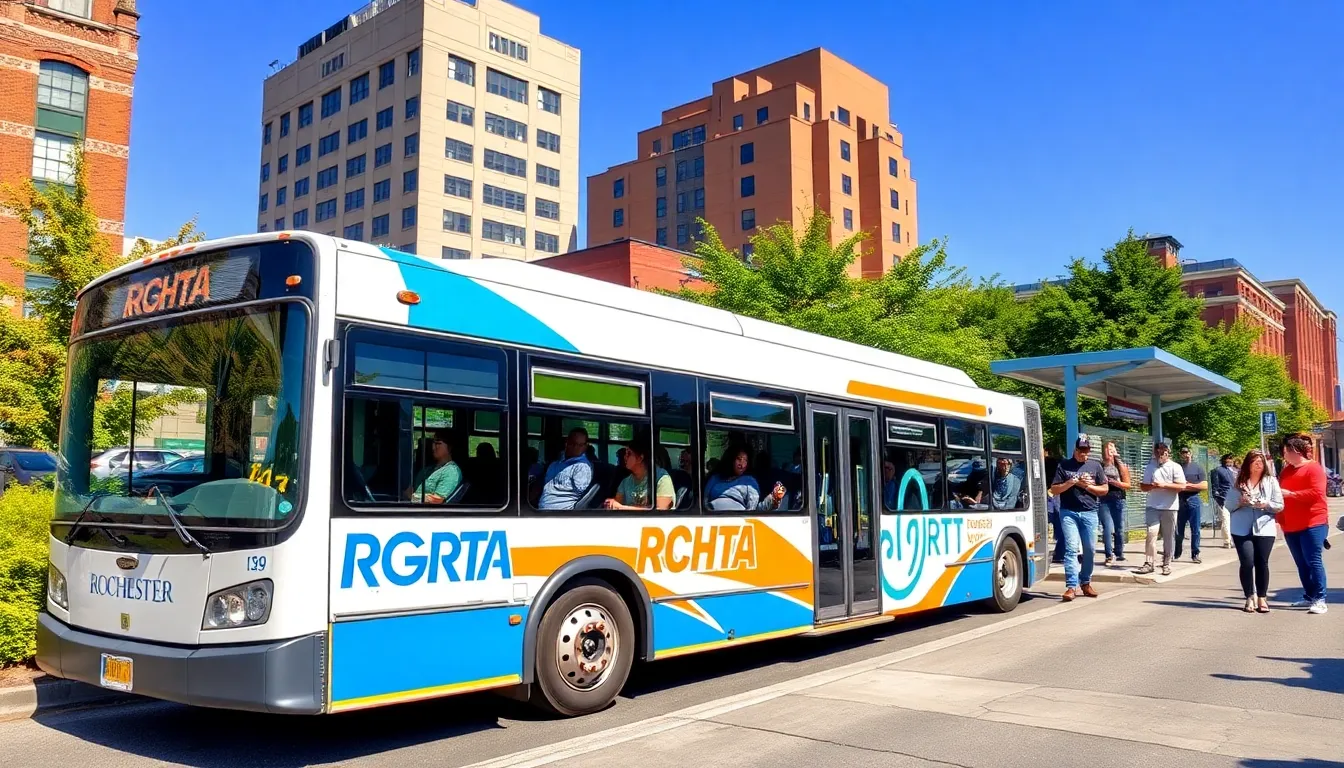Table of Contents
ToggleRochester public transit? It’s more than just a bus system: it’s the unsung hero of the city’s transportation network, quietly powering the daily commute for thousands. Imagine a network where buses work harder than a barista on a Monday morning, all while ferrying commuters to their dream jobs, afternoon escapades, and, of course, the local coffee shop. It’s time to dive deeper, uncover the history, current options, challenges, and future improvements that make Rochester’s transit worthy of a spotlight – and perhaps a standing ovation.
Rochester Public Transit

Rochester’s public transit system has roots deeper than your average historical novel. It all began in the late 1800s, when the first horse-drawn streetcars made their way through the streets, ushering in a new era of mobility. Fast forward to 1927, and you had the advent of electric streetcars, which many preferred to the clamor of hooves on cobblestones.
But here’s the kicker: in 1941, the electric vehicles were phased out in favor of good old-fashioned buses. This transition reflected a nationwide trend toward more manageable and cost-effective transportation options. Over the decades, Rochester adapted to the changing transportation needs of its residents, evolving from streetcars to the bus system we see today. Today’s buses are not just for transportation: they’re part of the community’s identity, connecting neighborhoods and facilitating local culture.
Current Modes of Transportation
Rochester public transit isn’t one-size-fits-all. The current array of transportation options can fit the needs of just about anyone. At the heart of the system are the bus services operated by the Rochester-Genesee Regional Transit Authority (RGRTA). With Routes 1 to 99, and a few cheeky express routes thrown in for good measure, the buses serve neighborhoods, educational institutions, and commercial hubs.
But the public transit offering doesn’t stop there. Think about accessibility: Rochester provides paratransit services for those who need extra assistance. There are also bike-sharing programs that make traversing the city on two wheels both affordable and eco-friendly. For those who enjoy a stroll, pedestrian pathways are being improved to encourage walking as a viable mode of transportation.
Key Transit Routes and Services
Understanding which routes to take can make or break your commute. Some of the key routes in Rochester public transit include Route 1, which connects downtown to the suburbs, making it a lifeline for those traveling to work. Meanwhile, Route 5 is famous for shuttling residents to the popular marketplace and shopping districts.
Also, there are express routes designed to speed things up. The Quality Transit Routes are especially favorites among commuters looking to get from point A to B without feeling like they’re on a scenic tour. The RGRTA works tirelessly to ensure that schedules are frequent and reliable, making public transit a valid solution for daily travel.
Accessibility and Inclusivity in Transit
Rochester public transit is all about the community, and a critical part of that is ensuring accessibility for all. The buses are equipped with ramps to accommodate wheelchairs, and priority seating is clearly marked. This commitment to inclusive transportation means that everyone, regardless of mobility challenges, can remain active participants in the fabric of city life.
On another note, the RGRTA has been proactive in engaging with the community through outreach programs. These initiatives gather input from residents about their needs and experiences using public transit. Such feedback is invaluable in shaping services to better cater to diverse groups within the community.
Challenges Facing Rochester Public Transit
As great as the Rochester public transit system is, it certainly isn’t without its challenges. Funding continues to be a pressing issue. Many cities face tight budgets, and public transit often feels the squeeze first. This leads to cutbacks in services, which can affect wait times and route frequency.
Another challenge is the need for infrastructure improvements. Aging buses and facilities can create roadblocks to a seamless transit experience. And let’s not forget the competition posed by ride-sharing services, which may entice potential users away from the bus system. The RGRTA is aware of these hurdles and actively seeks solutions to cater to the evolving needs of its users.
Future Developments and Improvements
Looking ahead, Rochester public transit has ambitious plans on the horizon. The RGRTA is exploring eco-friendly options, such as electric buses that can minimize the carbon footprint while maintaining efficiency. This shift not only promotes sustainability but also aligns with the broader movement toward environmentally responsible transit solutions.
Also, further upgrades to technology are in the pipeline. Imagine having real-time updates and tracking right on your phone, allowing riders to plan their trips with pinpoint accuracy. Tech improvements could redefine the way the community interacts with public transit, making it as efficient and user-friendly as possible.




